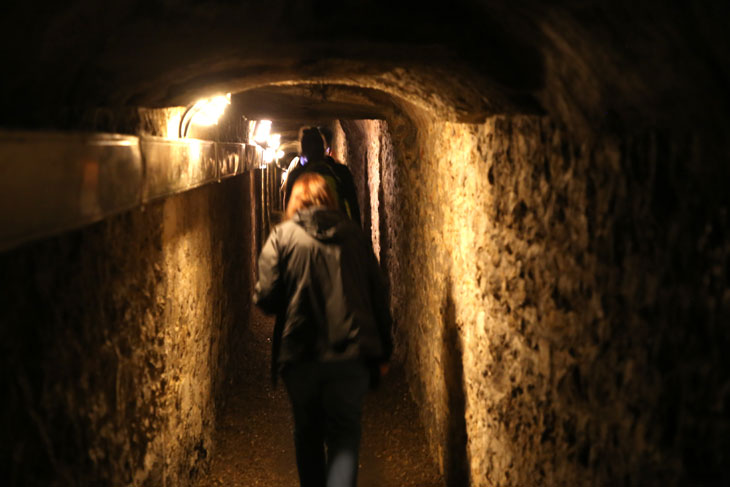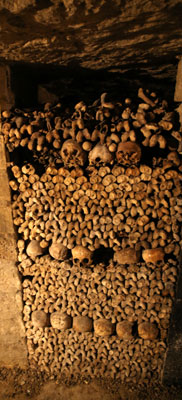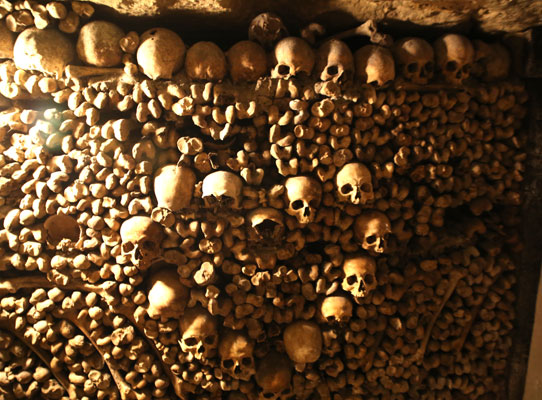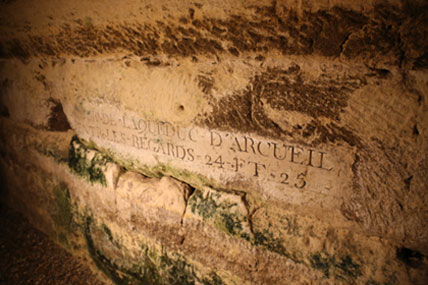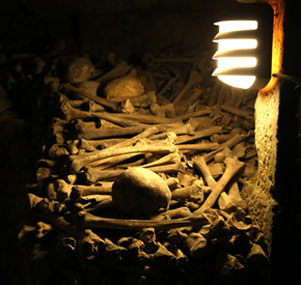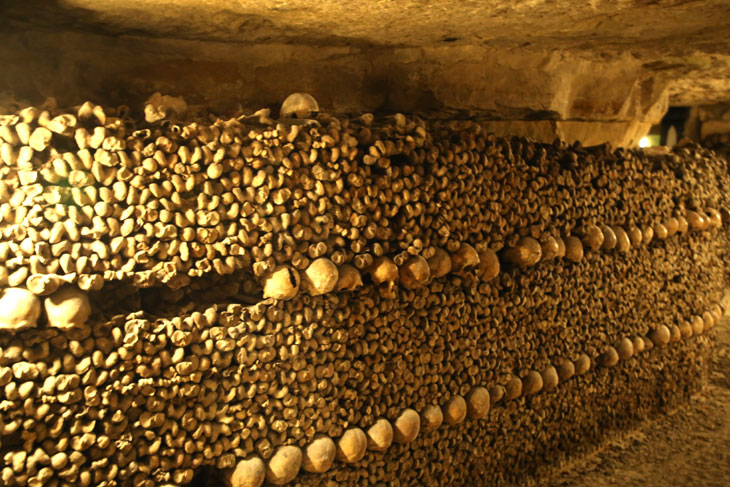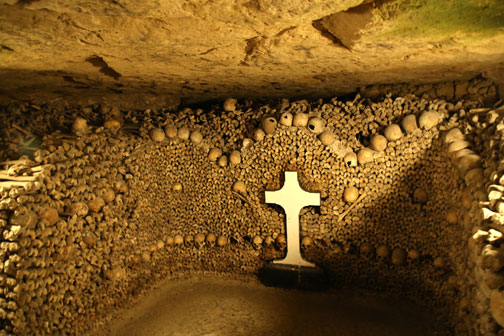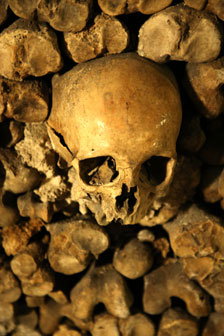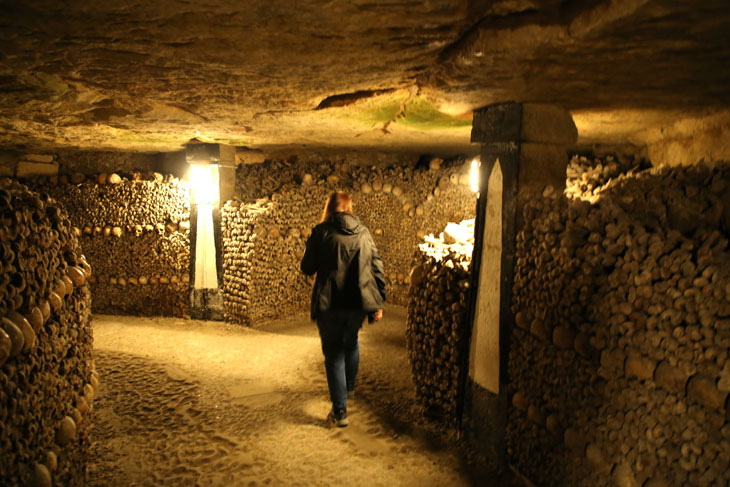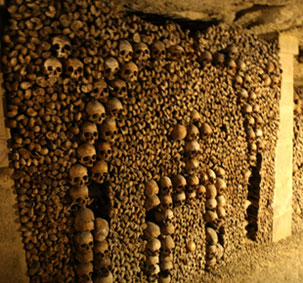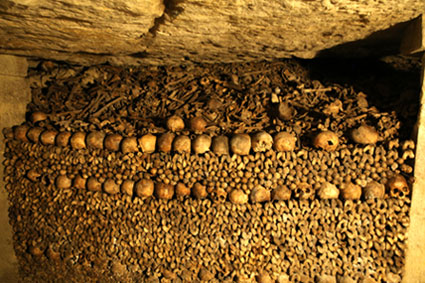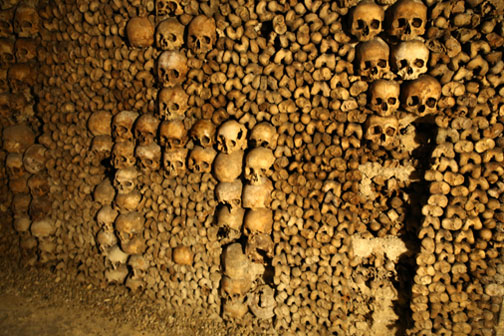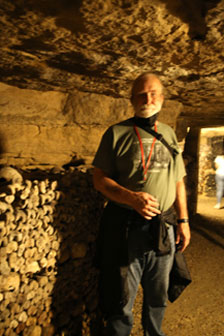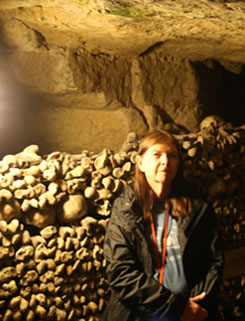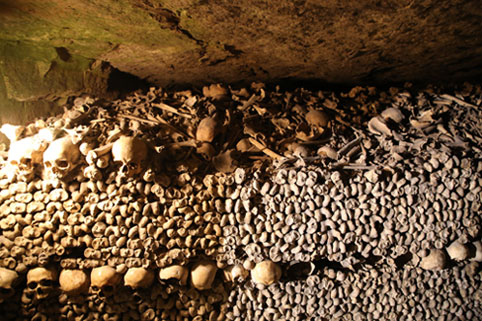The Catacombs of Paris
When I was making plans for Paris, I asked a friend who had visited the city several years before for ideas.
One place she recommended was The Catacombs of Paris which she described as "weirdly enjoyable". It sounded
macabre to me, but Walt was interested so I investigated further. Due to COVID restrictions, a limited number
of people were allowed in the tunnels at any particular time, there were no guided tours,
and visitors had to wear masks. A notice on the official website warned that tickets should only be purchased on
the site because of a problem with counterfeiting, and that they would be released only 7 days in advance. I
didn't appreciate it at the time, but the limited number of people admitted made the visit a lot more pleasant
than later visits to museums where the crowds were much too intense.
The tour begins with a long, long walk down a dimly lit tunnel.
Eventually you reach the Ossuary. Towards the end of the 18th century, the cemeteries of Paris were overflowing
resulting in the rampant spread of disease. To eliminate this problem, it was decided that they would be
closed and emptied and that the remains would be moved to a tunnel network outside the city which had been built
to link Paris' ancient stone quarries. Work began in 1785 and continued sporadically until 1860. The remains were
transferred in covered wagons at night to avoid hostile reactions from the general population and The Church. Over
time, the bones of over 6 million people were deposited in the tunnels.
At first the bones were just dumped in piles, but later, under the direction of Inspector Hericart
de Thury, they were carefully arranged. Walls were built out of skulls and tibiae, and other bones and bone
fragments were piled behind them. Many of the original cemetary decorations had disappeared, but the ones that were
still available were incorporated into the designs along with stone tablets bearing descriptions and warnings. In 1809
The Catacombs were open to the public by appointment.
The place quickly became a popular place to visit for both the French and foreigners. In the early 19th century concerts
and private events were held there. Finally, in 1874 it was open to the general public.
Imagine spending years of your life decoratively arranging the bones of over 6 million people.
A somewhat bizarre historical site visited by over half a million people a year.
